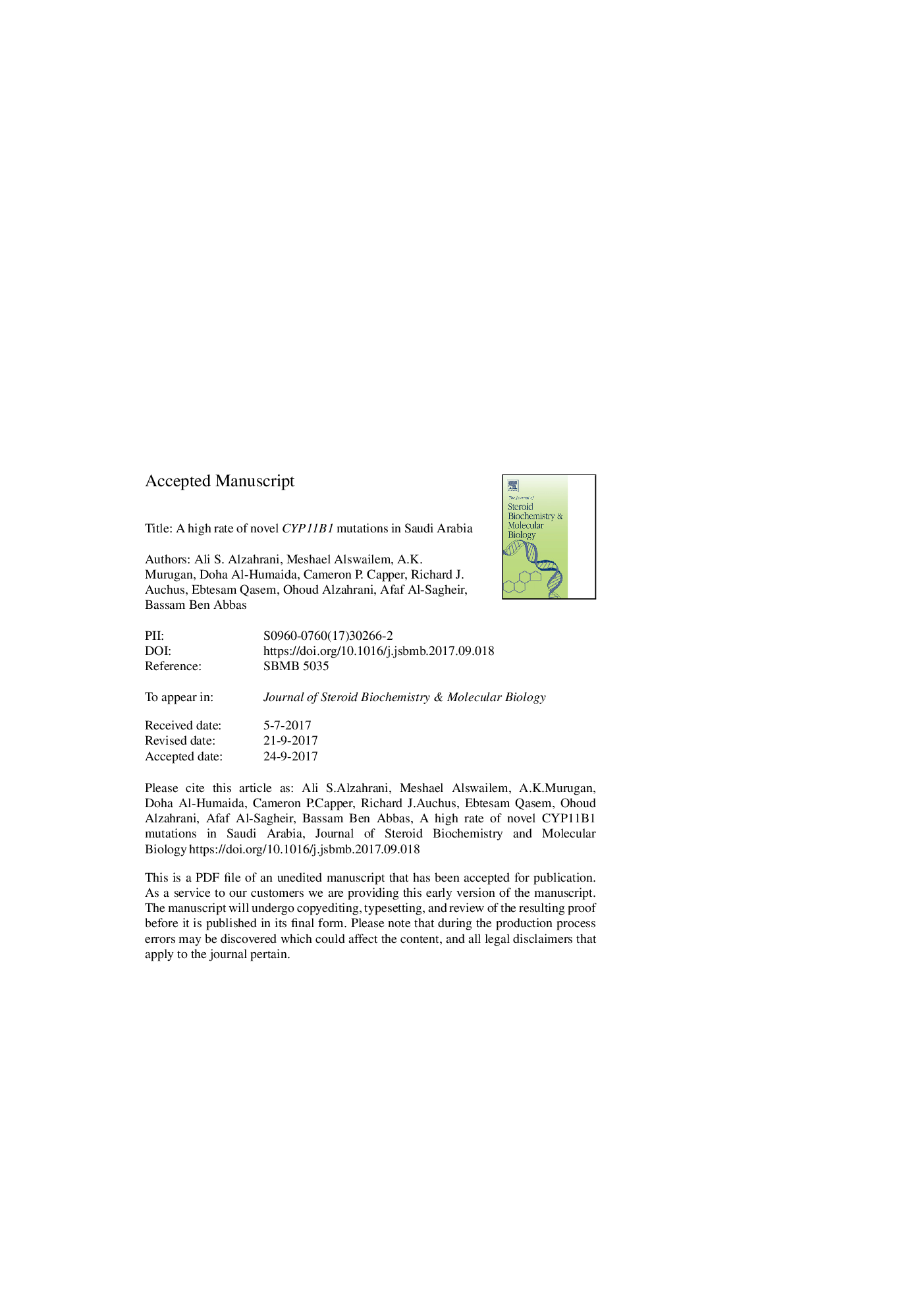| Article ID | Journal | Published Year | Pages | File Type |
|---|---|---|---|---|
| 8337977 | The Journal of Steroid Biochemistry and Molecular Biology | 2017 | 26 Pages |
Abstract
Despite ethnic variation, 11 β-hydroxylase deficiency (11β-OHD) has generally been considered the second most common subtype of congenital adrenal hyperplasia (CAH). We report a high rate of novel mutations in this gene (CYP11B1) in patients from Saudi Arabia. We studied 16 patients with 11β-OHD from 8 unrelated families. DNA was isolated from peripheral blood. The 9 exons and exon-intron boundaries of CYP11B1 were PCR-amplified and directly sequenced. The novel mutations were functionally characterized using subcloning, in vitro mutagenesis, cell transfection and 11-deoxycortisol: cortisol conversion assays. Six mutations were found in these 8 unrelated families. Three of these mutations are completely novel and two have just been recently described as novel mutations from the same population. These include a single nucleotide insertion mutation in codon 18 (c.53_54insT) leading to frameshift and truncation in 4 siblings, a novel mutation (c.1343G>C, p.R448P) in 3 unrelated families, a novel mutation (c.1394A>T, p.H465L) in 2 siblings, a novel mutation (c.617G>T, p.G206V) in 1 patient, and a recently described non-sense novel mutation (c.780G>A, p.W260X) in another patient. Out of the 6 mutations described in this report, only one mutation (p.Q356X) was reported previously. In vitro functional testing of the 3 missense and nonsense novel mutations revealed complete loss of the 11 hydroxylase activity. We conclude that 11 β-OHD in Saudi Arabia has a unique genotype with a high rate of novel mutations. The novel p. R448P mutation is the most common mutation in this highly inbred population.
Related Topics
Life Sciences
Biochemistry, Genetics and Molecular Biology
Biochemistry
Authors
Ali S. Alzahrani, Meshael M. Alswailem, Avaniyapuram Kannan Murugan, Doha S. Alhomaidah, Cameron P. Capper, Richard J. Auchus, Ebtesam Qasem, Ohoud S. Alzahrani, Afaf Al-Sagheir, Bassam Bin-Abbas,
